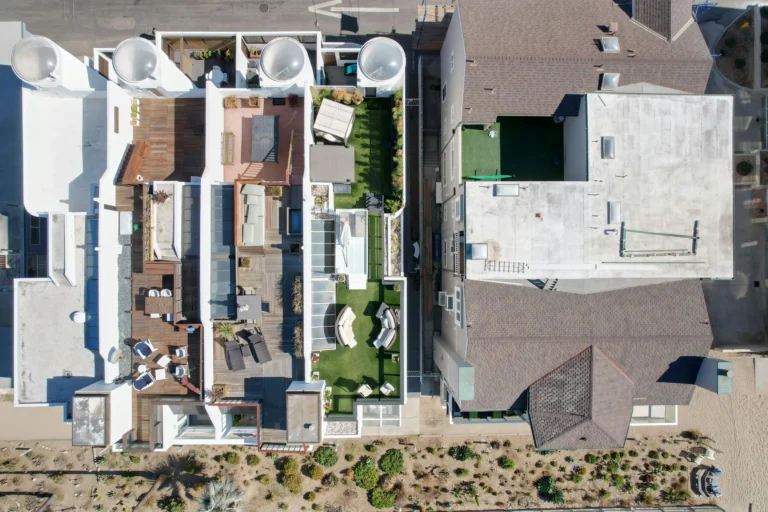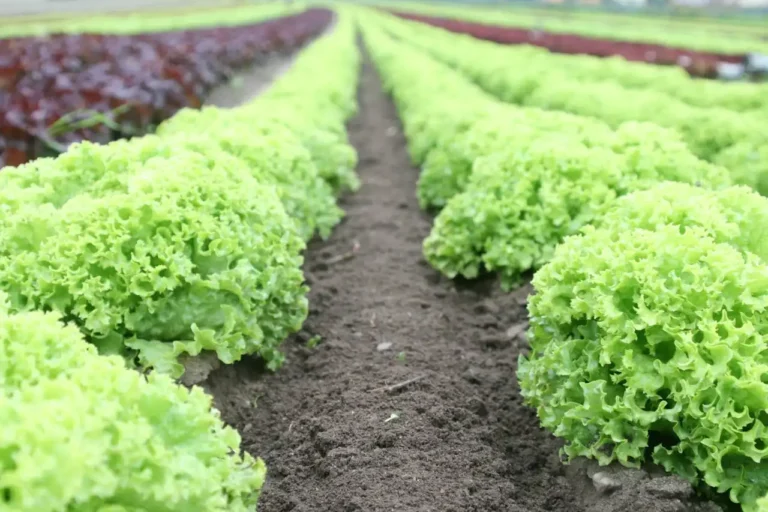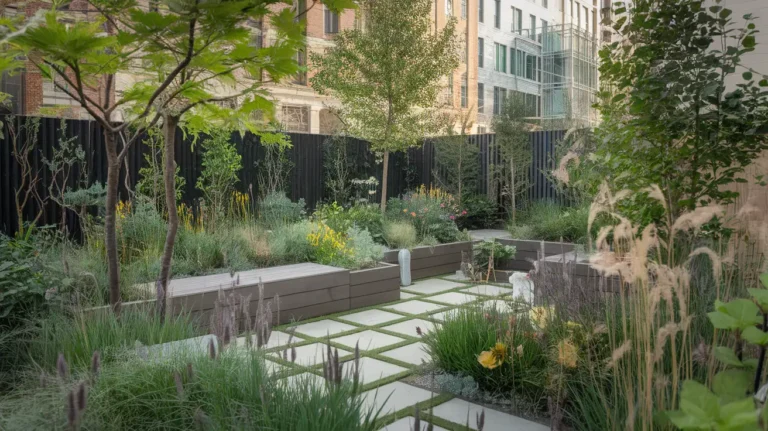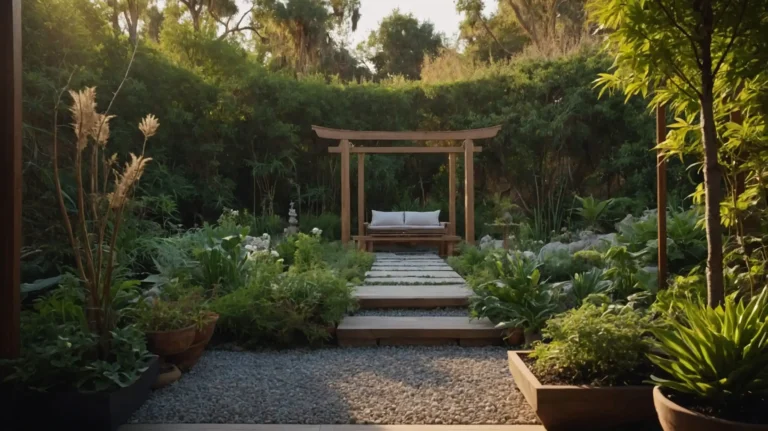15 Homesteading Garden Layout Ideas for Maximizing Space and Yield
Homesteading gardens offer a chance to grow your own food and live more self-sufficiently. With the right layout, you can make the most of your space and boost your harvest.
These 15 homesteading garden layout ideas will help you plan a productive and beautiful garden. Whether you have a big yard or a small plot, you’ll find options to fit your needs and goals.
1: Raised Bed Vegetable Patch
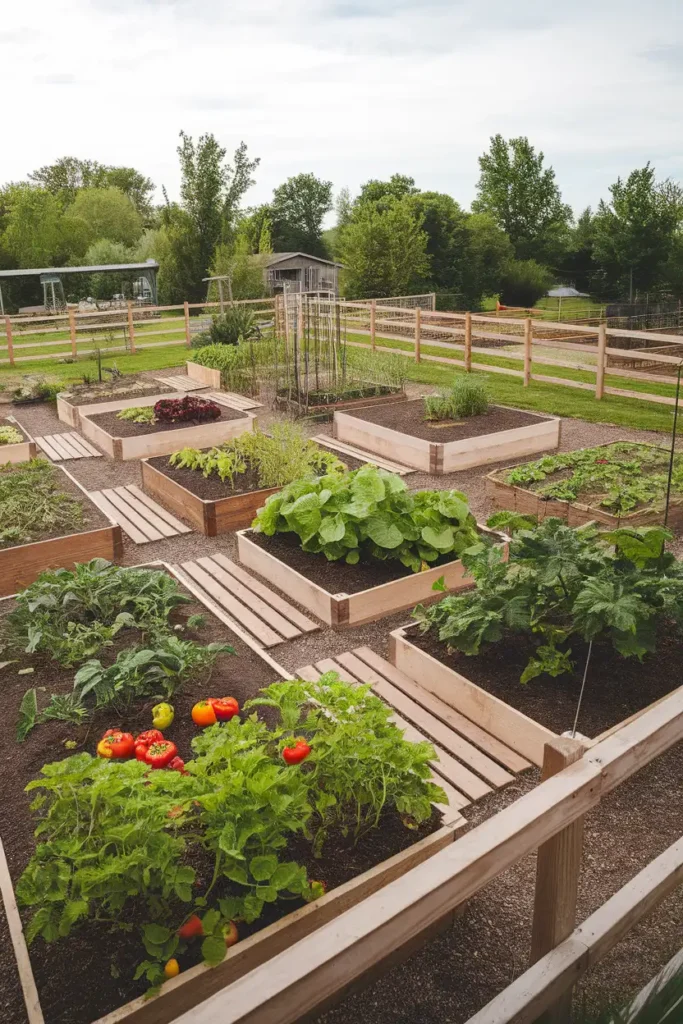
Raised beds are great for growing veggies at home. You can make them from wood, stone, or metal. They keep soil warm and drain well.
Try a 4×8 foot bed to start. It’s big enough for several plants but not too hard to reach across. Fill it with good soil mix.
Plant tall crops like tomatoes at the back. Put shorter plants in front. This lets all plants get enough sun.
2: Permaculture Herb Spiral
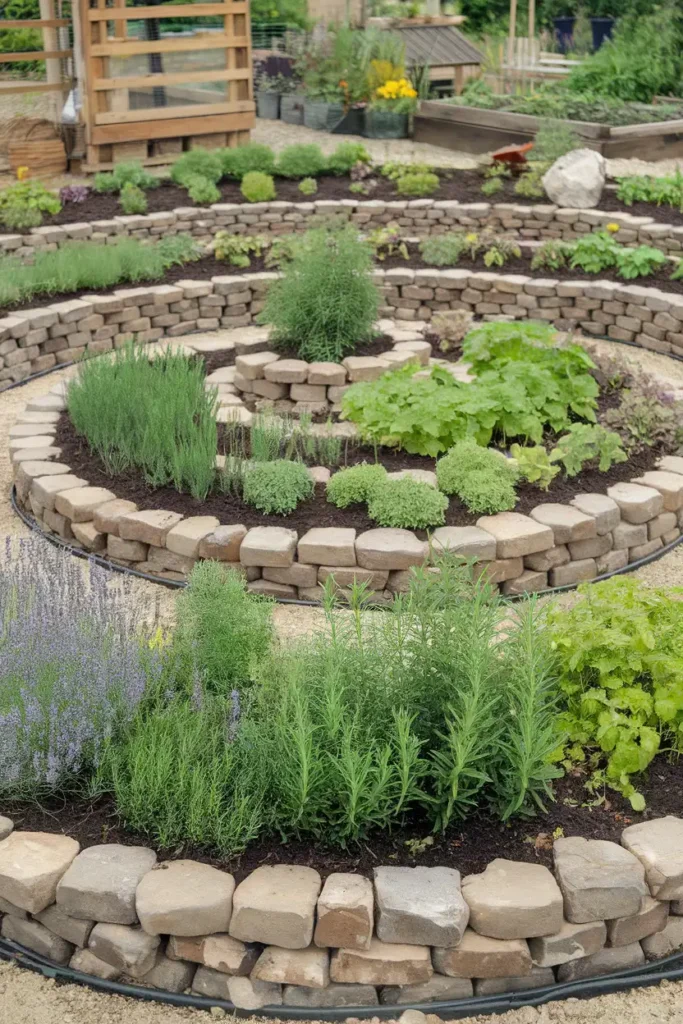
A herb spiral is a smart garden design that saves space and creates different growing zones. It’s shaped like a spiral and rises about 3 feet high.
The spiral shape makes a small area where many herbs can be grown. You can fit herbs that like different conditions all in one spot.
3: Companion Planting Zones

Companion planting zones group plants that help each other grow better. You can divide your garden into areas for specific plant pairs.
Put tomatoes and basil together in one zone. Try beans and corn in another. Marigolds can go around the edges to keep pests away.
4: Vertical Garden Towers
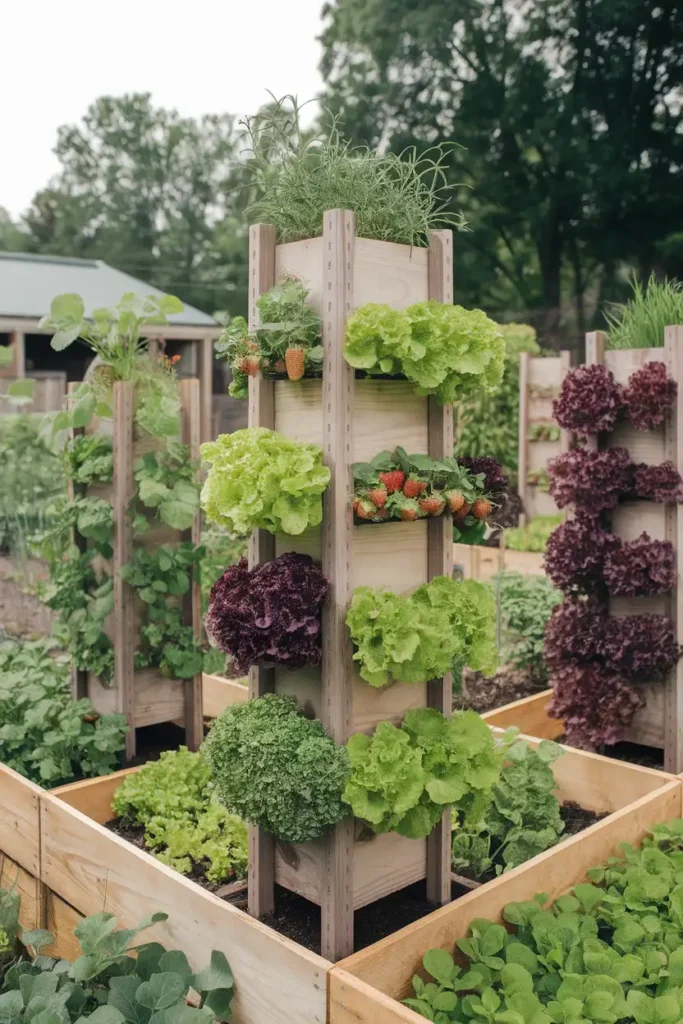
Vertical garden towers help you grow more in less space. You can make these towers from PVC pipes, wood, or even recycled materials.
They’re great for small plants like herbs, lettuce, and strawberries. You can put them on balconies, patios, or in small yards.
These towers let you garden without bending over. They also look nice and can be a cool part of your yard design.
5: Polytunnel Layout for Cold Climates
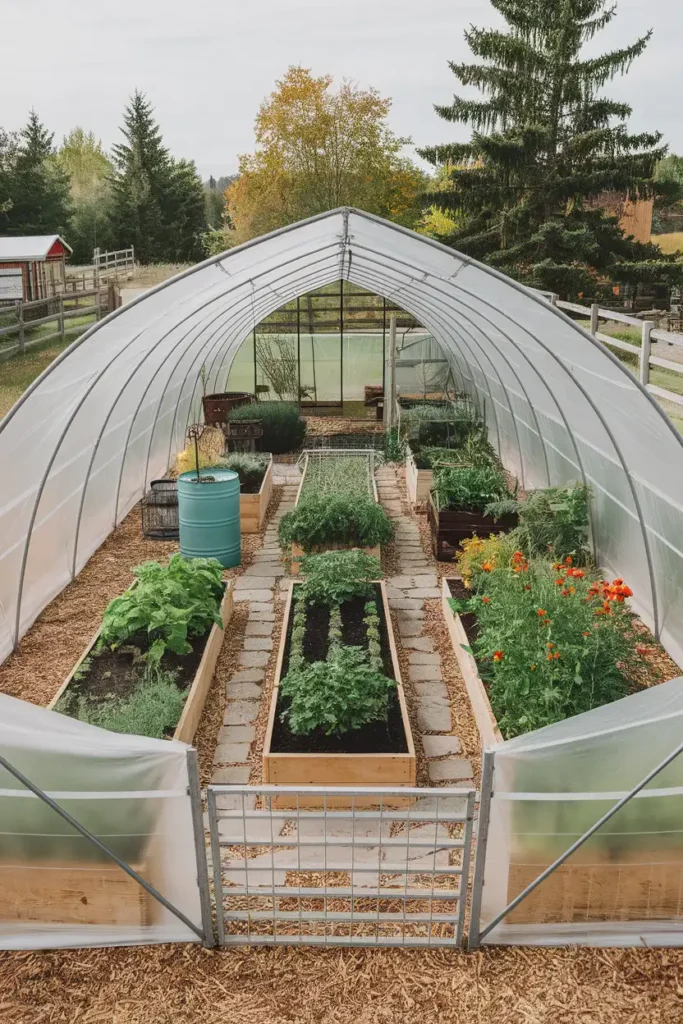
In cold climates, plan your polytunnel layout to maximize heat retention and protect plants. Place taller crops along the north side to avoid shading shorter plants.
Use raised beds to improve drainage and soil warmth. Consider adding thermal mass like water barrels or stone paths to store heat.
6: Square Foot Gardening Grid
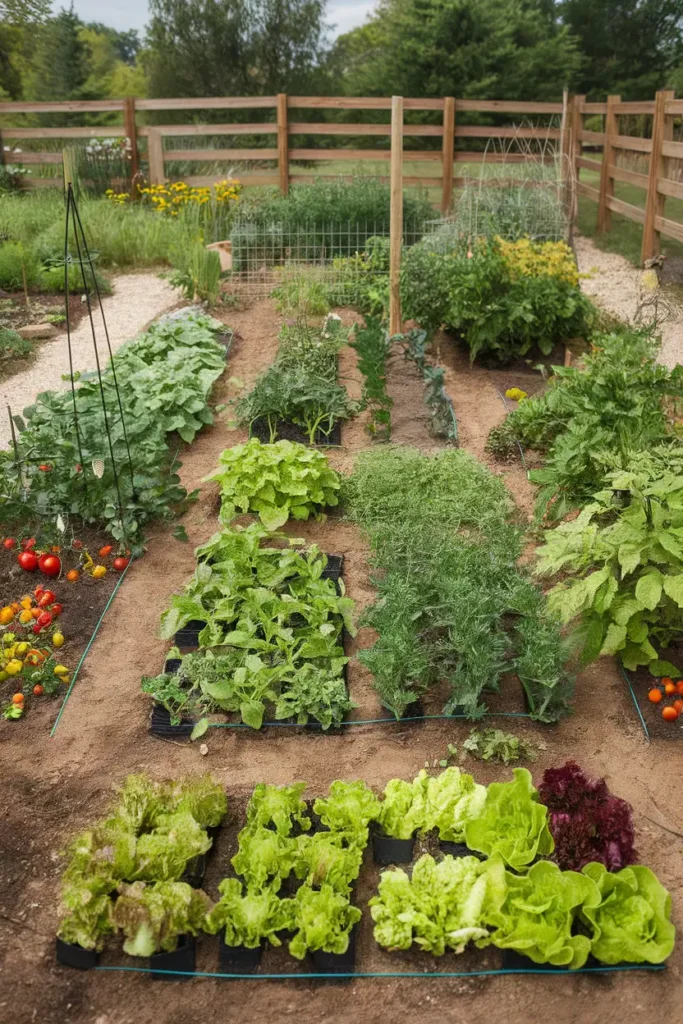
Square foot gardening uses a grid system to organize plants. You divide your garden bed into 1-foot squares.
This method helps you plan and use space well. It’s great for small areas and beginners.
You can grow different plants in each square. This lets you have a mix of vegetables in one bed.
7: Succession Planting Schedule

Succession planting keeps your garden productive all season long. Plan to sow crops every 2-3 weeks for a steady harvest.
Start with fast-growing veggies like lettuce, radishes, and spinach. Plant these every 7-14 days.
Followed by longer-season crops like beans, carrots, and beets. Sow new batches every 2-4 weeks.
8: Potager Garden Design
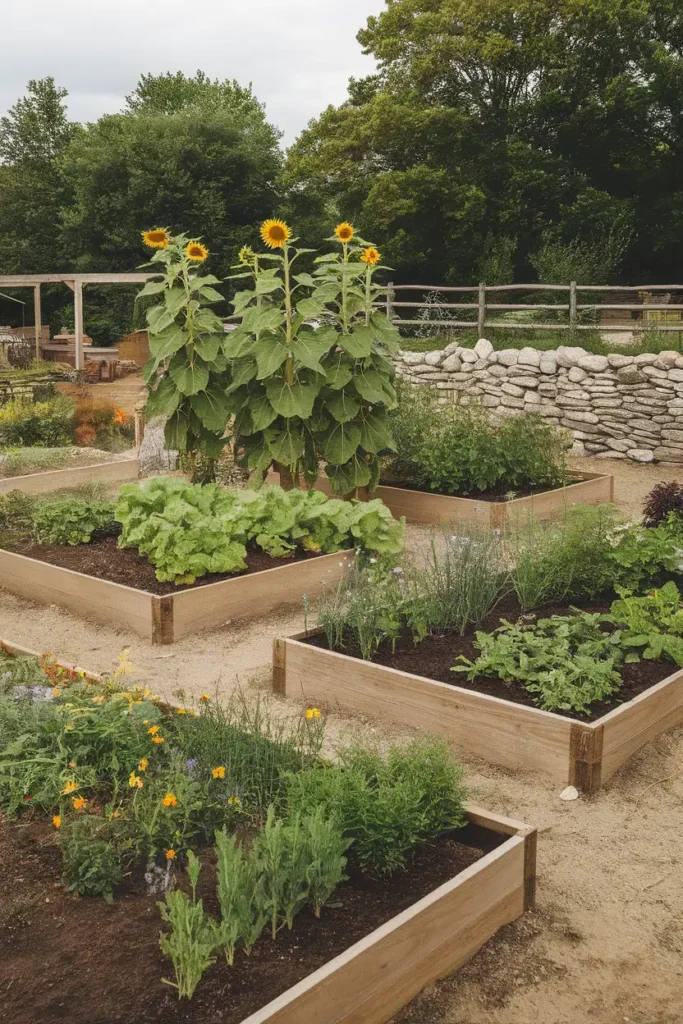
A potager garden blends beauty with practicality. You can create an eye-catching layout by mixing vegetables, herbs, and flowers.
Try using raised beds with natural borders to define spaces. Plant taller crops at the back and shorter ones in front.
Add visual interest with different plant heights and types. Consider using hedges or stone walls as windbreaks to protect your garden.
9: Hugelkultur Mounds
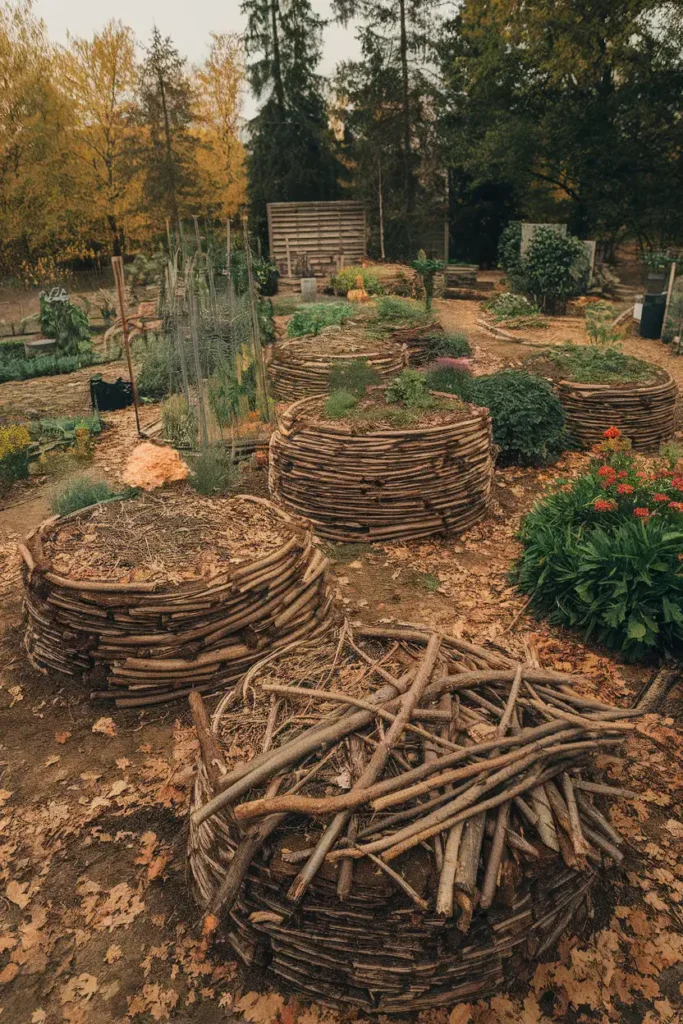
Hugelkultur mounds are a smart way to grow plants. You stack logs, branches, and other plant stuff. Then you cover it with soil.
This method helps keep water in the soil. It also feeds your plants as the wood breaks down.
10: Keyhole Garden Configuration
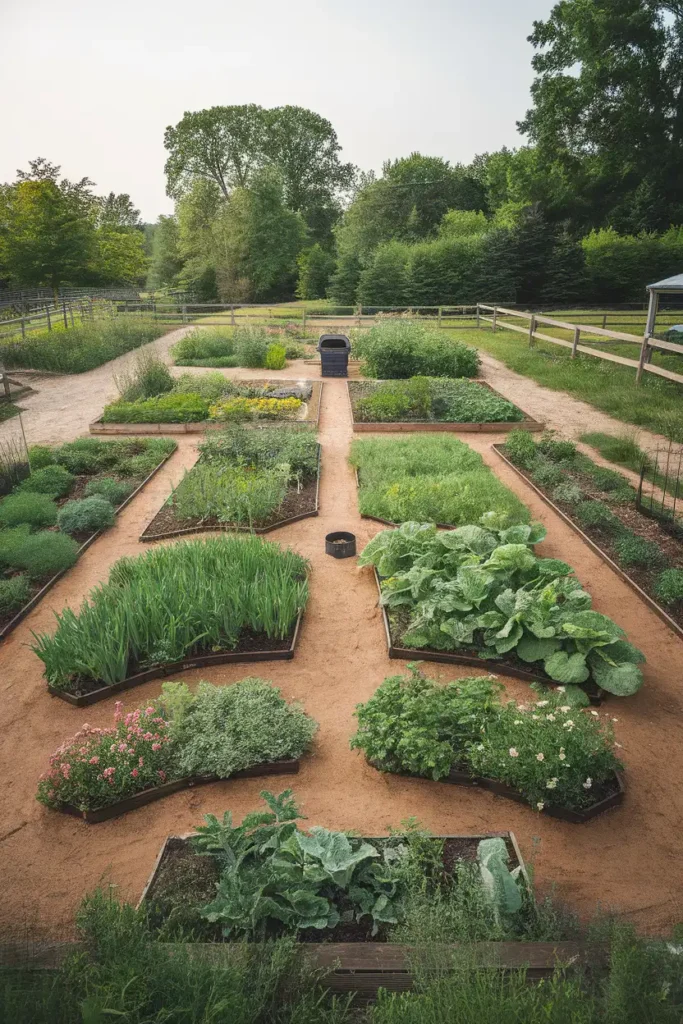
Keyhole gardens are a smart choice for your homestead. They have a round shape with a wedge cut out, like a keyhole. This design lets you reach all parts of the garden easily.
The center of the keyhole has a compost bin. It feeds nutrients to the whole garden as you water it. This setup is great for small spaces and saves water too.
11: Rainwater Harvest Layout
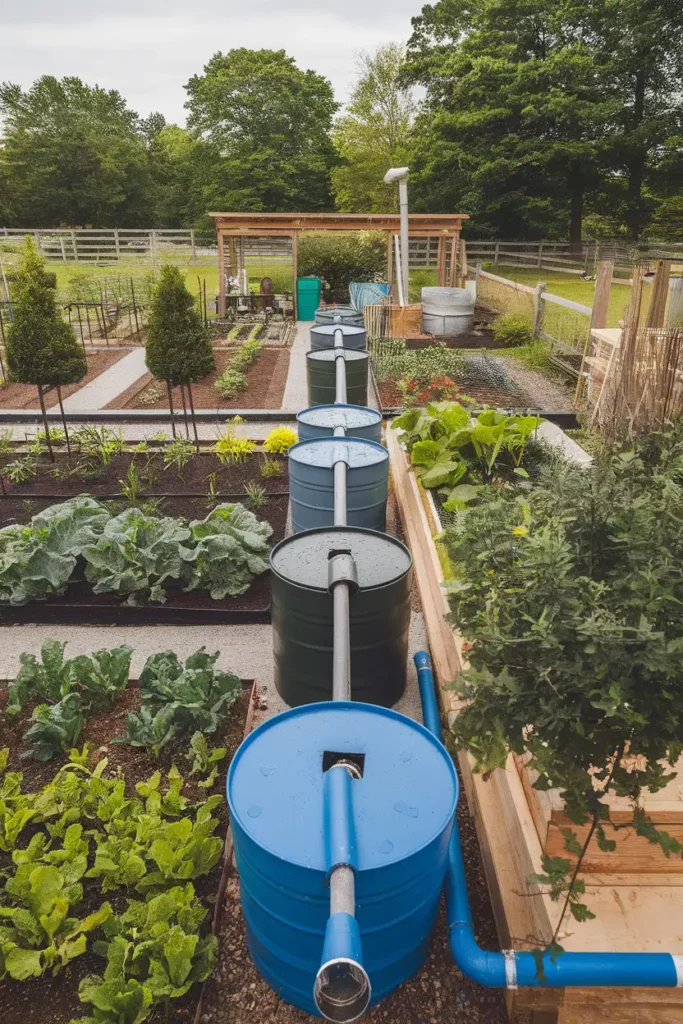
A rainwater harvest layout can be a great addition to your homestead garden. You can set up rain barrels or tanks near your roof’s downspouts to catch water.
Connect the barrels with pipes to create a larger storage system. Place the collection points strategically around your garden for easy access to water.
12: Windbreak Tree Plan

A windbreak tree plan can protect your homestead garden from harsh winds. Plant tall trees in a row on the windiest side of your property.
Space them 8-18 feet apart for larger trees or 6-12 feet for smaller ones. Choose trees that grow well in your area.
A good windbreak can reduce wind speed by up to 50% and shield an area up to 500 feet downwind.
13: Orchard Alley Cropping
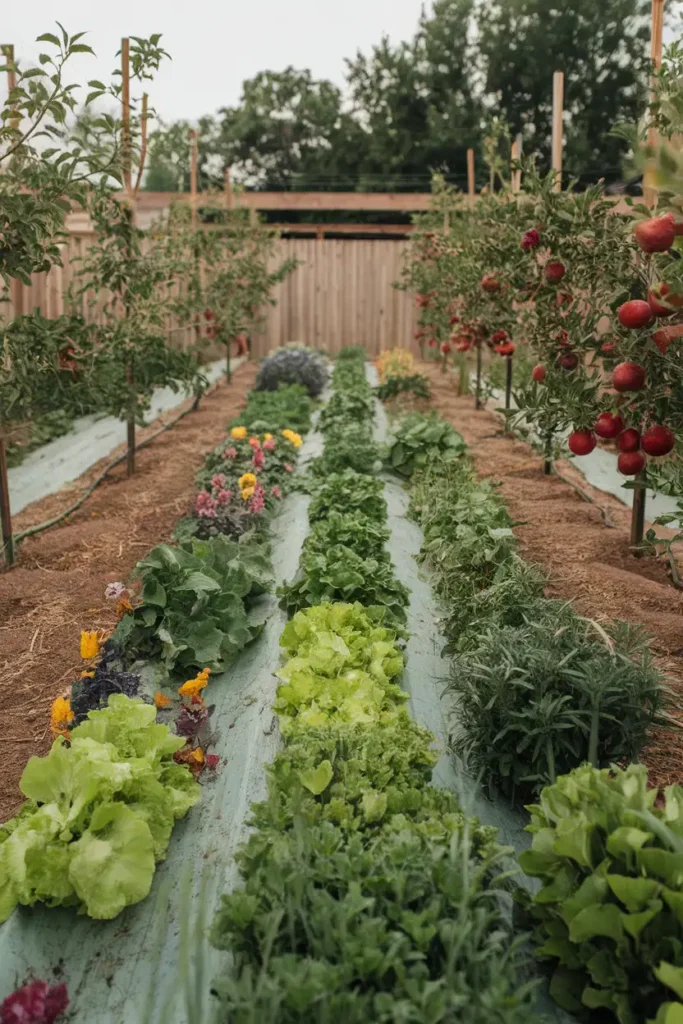
Orchard alley cropping mixes fruit trees with other crops between the rows. You plant trees in lines with space between them.
In these spaces, you can grow vegetables, herbs, or flowers. This setup makes good use of your land.
It also helps your trees. The other plants can keep weeds away and make the soil healthier.
14: Chicken Tractor Paths
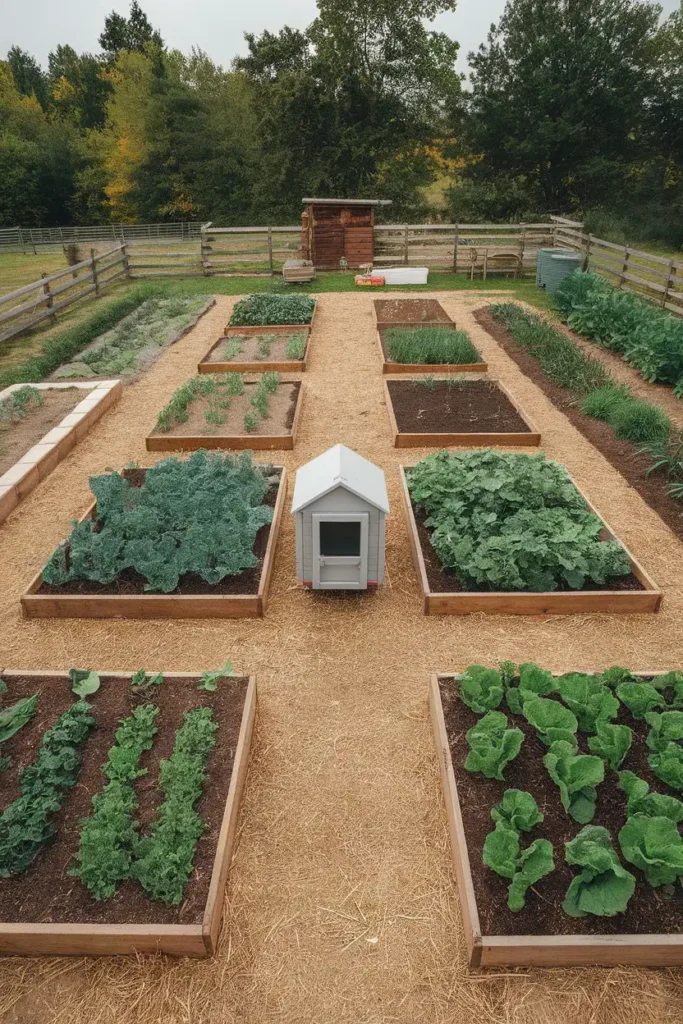
Chicken tractor paths can boost your garden’s fertility. Plan paths where you’ll move your mobile chicken coop. The chickens will scratch and poop as they go, fertilizing the soil.
You can rotate crops in these enriched areas next season. This method helps control pests and weeds too.
15: Bee-Friendly Flower Beds
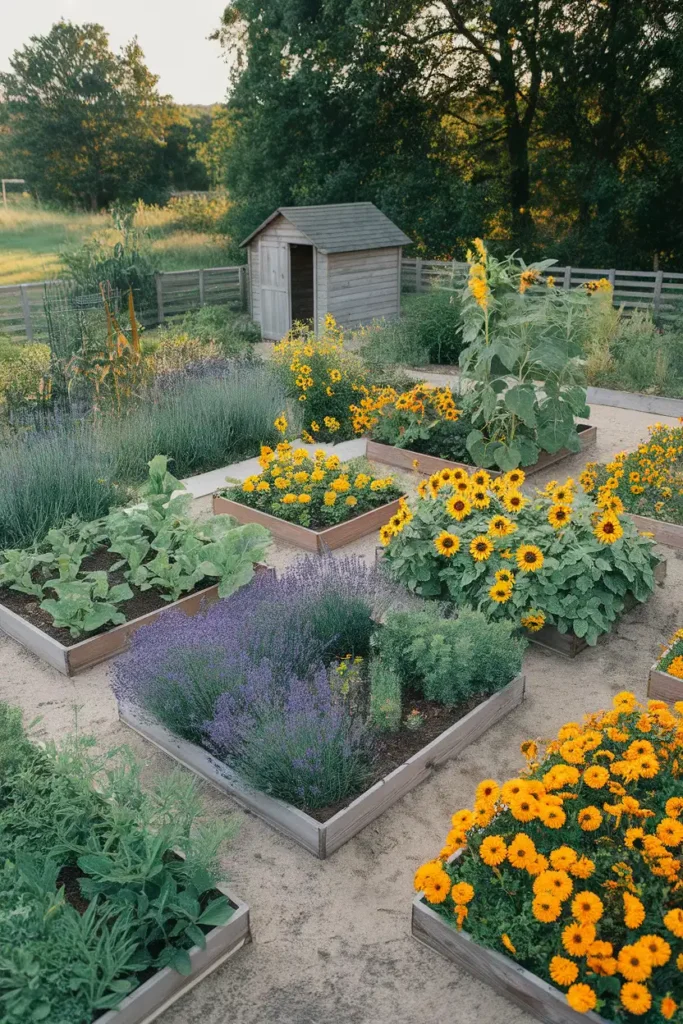
You can create a bee-friendly flower bed in your garden. Choose flowers that bees love, like lavender, sunflowers, and marigolds.
Plant in groups to make it easier for bees to find the flowers. Include plants that bloom at different times of the year.
Make sure your flower bed gets plenty of sunlight. Bees prefer warm, sunny spots. Avoid using pesticides in your bee-friendly area.


